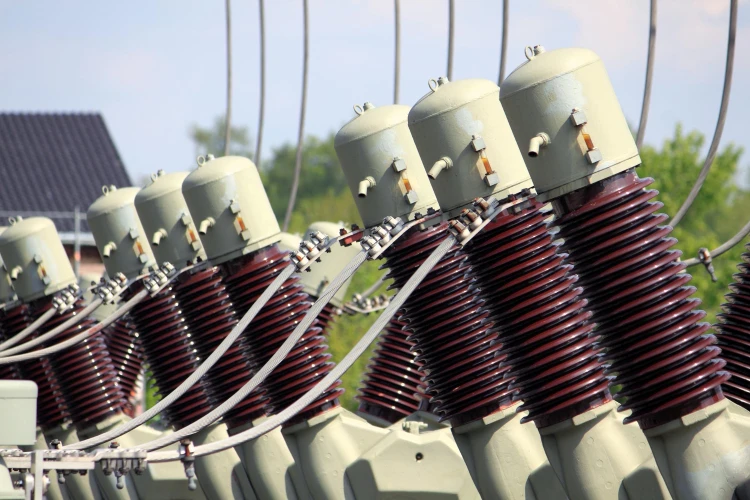Reactive power compensation of electrical energy – what is it
 Reactive power compensation
Reactive power compensation
Every electrical installation involves active power, reactive power, and their sum, known as apparent power. Although reactive energy is essential for the proper functioning of electrical devices, its excess is detrimental from the perspective of both the grid and energy consumers. Reactive power compensation is a method designed to address this issue. How does it work, and why is this topic worth exploring?
In recent years, we have observed rising energy prices, including increased charges for the consumption of reactive power exceeding the contractually permissible values. Currently, charges for reactive energy may affect not only large and medium consumers but also small businesses, public institutions, and municipal facilities. Reactive power compensation represents an investment capable of generating significant long-term savings. It also improves energy efficiency. How does this process work, and what does it involve?
What is reactive power?
When analysing electrical power, three components must be distinguished:
- active power
- reactive power
- apparent power
Active power, denoted by P, is the power converted into work or energy: mechanical, thermal, or light. Reactive power, denoted by Q, as the name suggests, does not perform work but circulates between the power source and the device. However, it may be necessary for the operation of certain electrical components. Apparent power is the sum of active and reactive power, denoted by S.
The main focus of this article is reactive power, specifically its excessive consumption. This can lead to adverse effects such as grid overload, additional energy losses, reduced capacity for active power transmission, and ultimately diminished energy efficiency. These issues result in additional costs that can significantly impact consumers when reactive power consumption exceeds contractual limits.
Types of reactive power
Reactive power can be divided into two types, depending on the source device:
- inductive reactive power
- capacitive reactive power
Inductive reactive power is associated with devices that have windings, such as reactors, transformers, and motors. It is drawn from the grid to create a magnetic field essential for the proper operation of these devices. Capacitive reactive power, on the other hand, is related to the use of capacitors, LED lighting, and similar devices. It is generated by cable networks and then returned to the power grid.
Any consumption of capacitive reactive power results in additional charges. Conversely, inductive reactive power consumption up to a certain level does not incur extra costs. This is typically the case when it does not exceed 40% of the consumed active power. However, this type of power causes voltage drops in the grid, increases loads and energy losses, which is why distribution system operators must compensate for these costs. The power grid is subjected to higher loads, which means that its individual components, including, for example, the transformer and switching station, power line, utility pole, and transformer, require increased capacity and efficiency. An alternative to rising charges for excessive reactive power consumption is reactive power compensation at the consumer’s end.
Reactive power compensation – what is it
To address the issue of excessive reactive power consumption, additional devices can be utilised to generate power of an opposite nature to that already present in the system. These devices are known as reactive power compensators. They significantly reduce or even eliminate reactive power consumption, which has a positive impact on grid parameters.
In the case of capacitive reactive power, compensation is achieved using devices that supply inductive reactive power. Conversely, for the compensation of inductive reactive power, solutions providing capacitive reactive power are employed. In the former scenario, commonly used solutions include reactor banks or shunt reactors. For compensating inductive reactive power, capacitor banks are typically used.

Reactive power
Reactive power compensation and renewable energy sources
A crucial issue from the perspective of reactive power compensation is the development of RES. Solutions such as wind farms and photovoltaic panels generate active power; however, energy production is heavily dependent on atmospheric conditions, weather, and other factors. This dependency affects the operation of the entire power grid and necessitates dynamic adjustments to the reactive power parameters within the grid. An effective solution in such cases is the use of an active power factor compensator, also known as a Static Var Generator (SVG).
Active power factor compensators are employed not only in RES installations but also in traditional power systems. For renewable energy, especially photovoltaics, these compensators play a crucial role by enhancing system performance and reducing energy losses. They function as voltage and power stabilisers, improve inverter operations, and contribute significantly to enhancing energy efficiency.
The importance and methods of reactive power compensation
Reactive power compensation is crucial for the efficient and fault-free operation of power grids. There are several solutions to deal with this challenge—both at the macro level, involving individual components of the power grid, and at the micro level, from the perspective of individual consumers. Appropriately tailored solutions help reduce excessive reactive power consumption, which is particularly important in an era of rising electricity costs. They also contribute to more stable grid operation. Such solutions are especially beneficial for entities and facilities with numerous inductive devices, large industrial plants, and any consumers experiencing additional charges for exceeding reactive power limits on their energy bills.